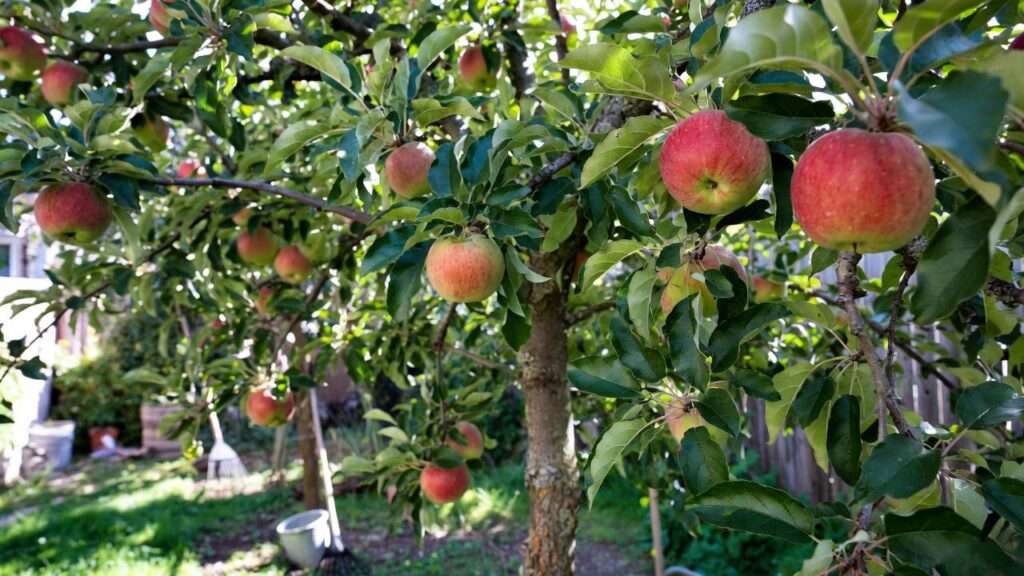Picture this: you step into your backyard, pluck a crisp, sweet apple from your very own tree, and savor its juicy flavor—all in a warm climate where apple trees rarely thrive! Anna apple trees make this dream a reality for gardeners in USDA zones 5–9. With their low-chill requirements and delicious fruit, these trees are a game-changer for home orchards in Southern states, coastal regions, and beyond. Whether you’re a seasoned gardener or a beginner, this comprehensive guide, crafted by a horticulture expert with over a decade of fruit tree cultivation experience, will walk you through planting, caring for, and harvesting Anna apple trees. Expect practical tips, expert insights, and step-by-step advice to ensure your trees flourish and yield bountiful apples. Let’s dive in! 🌟
What Makes Anna Apple Trees Special? 🌟
A Low-Chill Apple Variety for Warm Climates
Anna apple trees, developed in Israel in the 1960s, are a standout choice for regions with mild winters. Unlike traditional apple varieties that require 500–1000 chill hours (hours below 45°F), Anna thrives with just 300–400 chill hours, making it ideal for warm climates like Florida, Texas, or Southern California. These trees produce medium-sized, red-blushed apples with a sweet-tart flavor, perfect for fresh eating, baking, or juicing. Their early ripening season—typically late spring to early summer—means you’ll enjoy homegrown apples before most other varieties.
Benefits of Growing Anna Apple Trees
Why choose Anna apple trees for your garden? Here’s why they’re a favorite:
- High Yields: A single mature tree can produce 50–100 pounds of fruit annually.
- Compact Size: Growing 10–15 feet tall (or smaller for dwarf varieties), they fit small yards or even large containers.
- Pollinator-Friendly: Pair with varieties like Dorsett Golden or Ein Shemer for better fruit set.
- Versatility: Their apples shine in pies, sauces, or straight off the tree.
Expert Tip: Plant a compatible pollinator nearby to boost fruit production by up to 30%. This ensures your Anna apple tree reaches its full potential! 🍏
How to Plant Anna Apple Trees for Success 🌱
Choosing the Right Location
To thrive, Anna apple trees need the right environment. Select a spot with:
- Full Sun: 6–8 hours of direct sunlight daily for optimal photosynthesis and fruit development.
- Well-Draining Soil: A pH of 6.0–7.0 is ideal; test your soil and amend with lime or sulfur if needed.
- Good Airflow: Avoid low-lying frost pockets or overly windy areas to protect young trees.
A sunny, south-facing slope is often perfect, as it maximizes warmth and light—key for low-chill varieties like Anna.
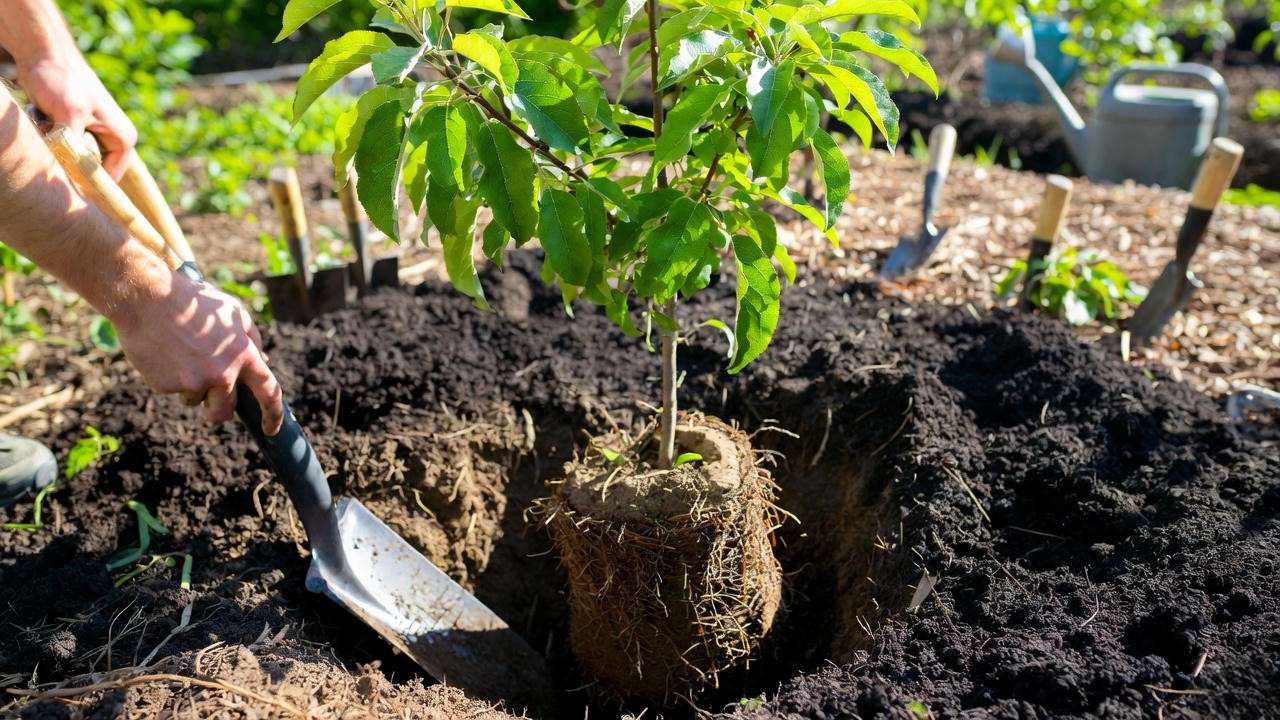
When and How to Plant
The best time to plant Anna apple trees in warm climates is late fall to early spring, when cooler temperatures help roots establish. Follow these steps:
- Dig the Hole: Make it twice as wide and as deep as the root ball (about 2–3 feet wide).
- Amend the Soil: Mix native soil with 20–30% organic compost to improve drainage and nutrients.
- Plant the Tree: Position the tree so the graft union (a bulge near the base) is 2–3 inches above ground. Backfill and tamp gently.
- Water Thoroughly: Soak the soil to settle roots, using about 5 gallons for a new tree.
Pro Example: For sandy soils common in warm regions, add a handful of bone meal to the planting hole to support root growth.
Spacing and Pollination Needs
Space standard Anna apple trees 10–15 feet apart and dwarf varieties 8–10 feet apart to ensure good airflow and sunlight. While Anna trees are partially self-pollinating, cross-pollination with another variety significantly increases fruit yield. Compatible pollinators include Dorsett Golden, Ein Shemer, or Gala. Plant pollinators within 50 feet for best results, as bees will do the heavy lifting.
FAQ: Can Anna apple trees self-pollinate? They can produce some fruit alone, but yields are often 20–30% lower without a pollinator.
Essential Care Tips for Thriving Anna Apple Trees 🌿
Watering Requirements
Proper watering is critical, especially in warm climates where drought stress is common. Aim for:
- Young Trees: 1–2 inches of water weekly, delivered deeply to encourage strong roots.
- Mature Trees: Adjust based on rainfall, ensuring soil stays moist but not waterlogged.
- Method: Use a soaker hose or drip irrigation for consistent moisture without wetting foliage.
Avoid overwatering, as soggy soil can lead to root rot, a common issue in heavy clay soils. Check soil moisture by digging 2–3 inches down—if it’s dry, it’s time to water.
Fertilizing for Healthy Growth
Anna apple trees benefit from balanced nutrition. Apply a 10-10-10 granular fertilizer or organic compost in early spring, just after bud break, and again in early summer. For a standard tree, use 1–2 pounds of fertilizer, spread evenly under the canopy. Over-fertilizing, especially with high-nitrogen products, can lead to excessive leaf growth at the expense of fruit.
Expert Insight: Test your soil every 2–3 years to monitor nutrient levels. If phosphorus or potassium is high, switch to a low-nitrogen fertilizer like 5-10-10.
Pruning for Shape and Yield
Pruning shapes your tree, improves airflow, and boosts fruit quality. Prune in late winter or early spring before buds swell:
- Remove Dead Wood: Cut away any damaged or diseased branches.
- Thin Crowded Areas: Open the canopy to let sunlight reach inner branches, reducing disease risk.
- Maintain Structure: Aim for a central leader or open-vase shape, depending on your tree’s form.
Use clean, sharp pruning shears and make angled cuts just above a bud. For young trees, focus on training rather than heavy pruning to establish a strong framework.
Visual Aid Idea: A diagram of pruning cuts (e.g., thinning vs. heading cuts) can clarify this process for beginners.

Mulching and Soil Care
Mulching conserves water, suppresses weeds, and regulates soil temperature—crucial in warm climates. Apply 2–4 inches of organic mulch (wood chips, straw, or bark) around the tree, keeping it 6 inches from the trunk to prevent rot. Replenish mulch annually, especially before summer heat.
Protecting Anna Apple Trees from Pests and Diseases 🐞
Common Pests to Watch For
Warm climates can attract pests like:
- Apple Maggots: Small flies that lay eggs in fruit, causing dimples and tunnels. Use sticky traps or kaolin clay sprays to deter them.
- Codling Moths: Larvae burrow into apples, ruining fruit. Apply organic spinosad sprays during egg-laying season (late spring).
- Aphids: Sap-sucking insects that curl leaves. Introduce ladybugs or spray neem oil for control.
Example: One gardener in Florida reduced aphid infestations by planting marigolds near their Anna apple tree, attracting beneficial insects.
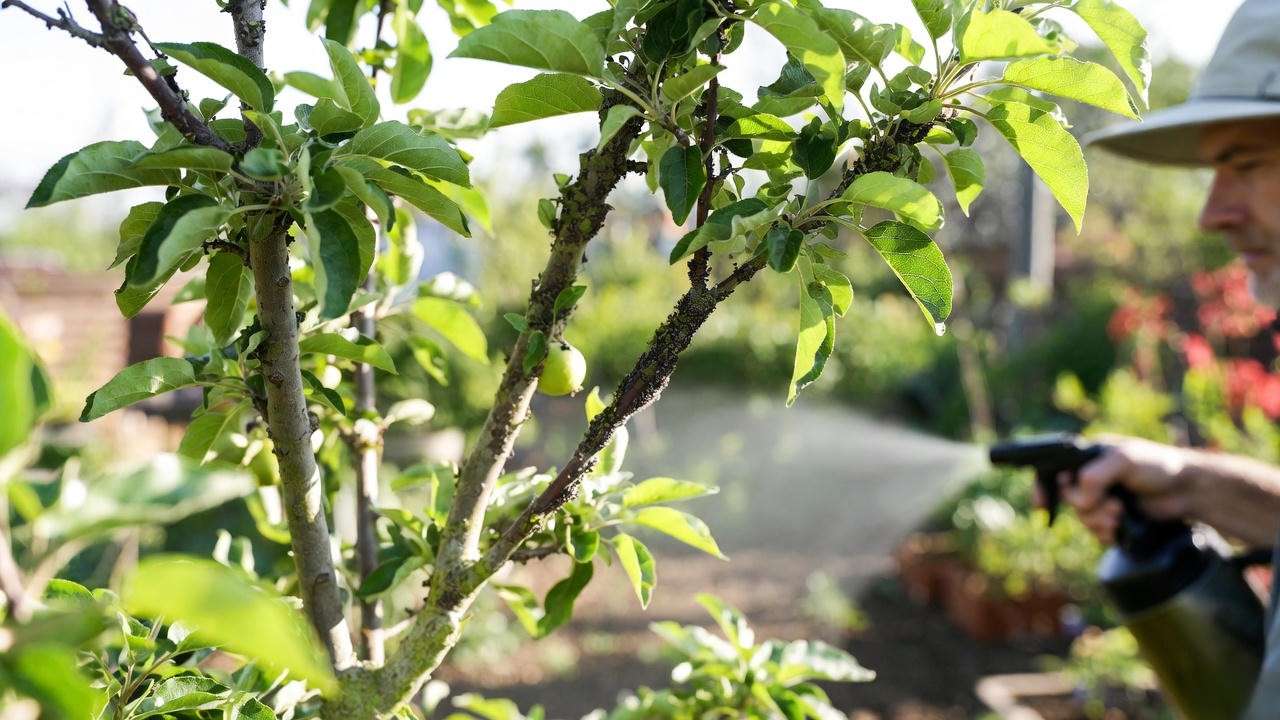
Preventing and Treating Diseases
Anna apple trees are susceptible to:
- Fire Blight: A bacterial disease causing blackened, wilted shoots. Prune affected areas 12 inches below symptoms and apply copper-based fungicides in spring.
- Powdery Mildew: White, powdery spots on leaves. Improve airflow through pruning and use sulfur-based sprays if needed.
Sanitation is key—remove fallen leaves and fruit promptly to reduce disease spread.
Climate-Specific Challenges
In warm regions, heat stress and sunburn can affect Anna apple trees. To protect:
- Mitigate Heat: Water deeply during heatwaves and use shade cloth for young trees.
- Prevent Sunburn: Apply kaolin clay to fruit and trunks to reflect sunlight.
Expert Tip: Paint trunks with diluted white latex paint to shield against sunscald in intense climates.
Harvesting and Storing Anna Apples 🍏
When to Harvest
Knowing when to pick Anna apples ensures the best flavor and quality. Look for these signs of ripeness:
- Color: Apples develop a vibrant red blush over a yellow-green base.
- Texture: Fruit feels firm but not rock-hard when gently squeezed.
- Ease of Picking: Apples detach with a slight twist, leaving the stem intact.
In most warm climates, Anna apples ripen between June and July, earlier than many other varieties. Harvest time varies slightly based on your region’s climate—coastal areas may see fruit as early as late May.
Tip: Taste-test a few apples to confirm peak sweetness. If they’re too tart, give the tree another week.
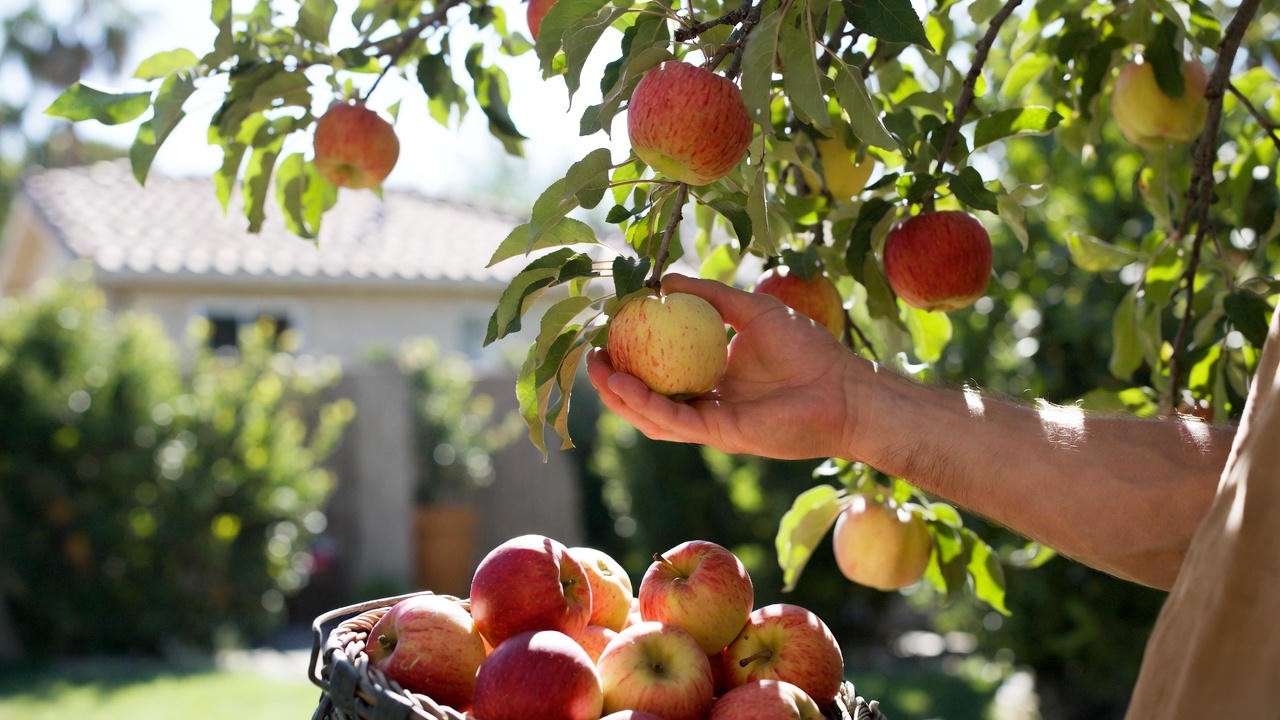
How to Harvest Without Damage
Proper harvesting preserves fruit quality and prevents tree stress. Follow these steps:
- Hand-Pick: Gently twist apples upward to detach them, avoiding pulling or tugging.
- Use Tools for High Branches: For taller trees, use a fruit-picking pole or pruning shears to reach fruit safely.
- Handle with Care: Place apples in a padded basket to prevent bruising, which can reduce storage life.
Avoid dropping fruit, as bruises attract pests and accelerate spoilage. Harvest in the morning when temperatures are cooler to keep apples crisp.
Storing and Using Your Apples
Anna apples are versatile, perfect for fresh eating, baking, or preserving. Here’s how to store them:
- Short-Term Storage: Refrigerate at 32–35°F in a perforated plastic bag to maintain humidity. Anna apples stay fresh for about 1 month.
- Long-Term Options:
- Canning: Make applesauce, pie filling, or preserves.
- Freezing: Slice and blanch apples to prevent browning, then freeze for up to 6 months.
- Drying: Dehydrate slices for healthy snacks.
Recipe Idea: Try this simple Anna apple pie recipe: Combine 6 cups of sliced Anna apples with ¾ cup sugar, 1 tsp cinnamon, and a splash of lemon juice. Bake in a double crust at 375°F for 45 minutes. The sweet-tart flavor shines! 🥧
Troubleshooting Common Anna Apple Tree Problems ⚠️
Why Isn’t My Tree Fruiting?
If your Anna apple tree isn’t producing, consider these culprits:
- Lack of Pollination: Without a compatible pollinator like Dorsett Golden, fruit set may be low. Plant a second variety or graft a pollinator branch.
- Improper Pruning: Over-pruning can remove fruiting spurs. Focus on light thinning for young trees.
- Nutrient Issues: Low potassium or phosphorus can reduce blooms. Conduct a soil test and adjust fertilization.
Solution: Consult your local agricultural extension service for tailored advice. For example, a soil test might reveal a magnesium deficiency, easily fixed with Epsom salt sprays.
Dealing with Poor Growth or Yellowing Leaves
Slow growth or yellowing foliage signals underlying issues:
- Water Stress: Over- or under-watering can stunt growth. Check soil moisture and adjust irrigation.
- Nutrient Deficiency: Yellow leaves often indicate nitrogen or iron shortages. Apply a chelated iron supplement for chlorosis.
- Pest Damage: Root-feeding pests like nematodes can weaken trees. Inspect roots during transplanting or consult an expert.
Case Study: A Texas gardener revived a struggling Anna apple tree by correcting overwatering and adding composted manure, boosting growth within one season.
Advanced Tips for Maximizing Anna Apple Tree Success 🚀
Training for Espalier or Containers
Anna apple trees adapt well to small spaces through espalier (training along a wall or trellis) or container growing. For containers:
- Choose Dwarf Rootstocks: M26 or M9 keep trees under 8 feet tall.
- Use Large Pots: Select 15–20-gallon containers with drainage holes.
- Soil Mix: Blend potting soil with 20% perlite for aeration.
For espalier, train branches in a fan or candelabra shape against a sunny wall, pruning annually to maintain form. This method maximizes fruit production in tight spaces.
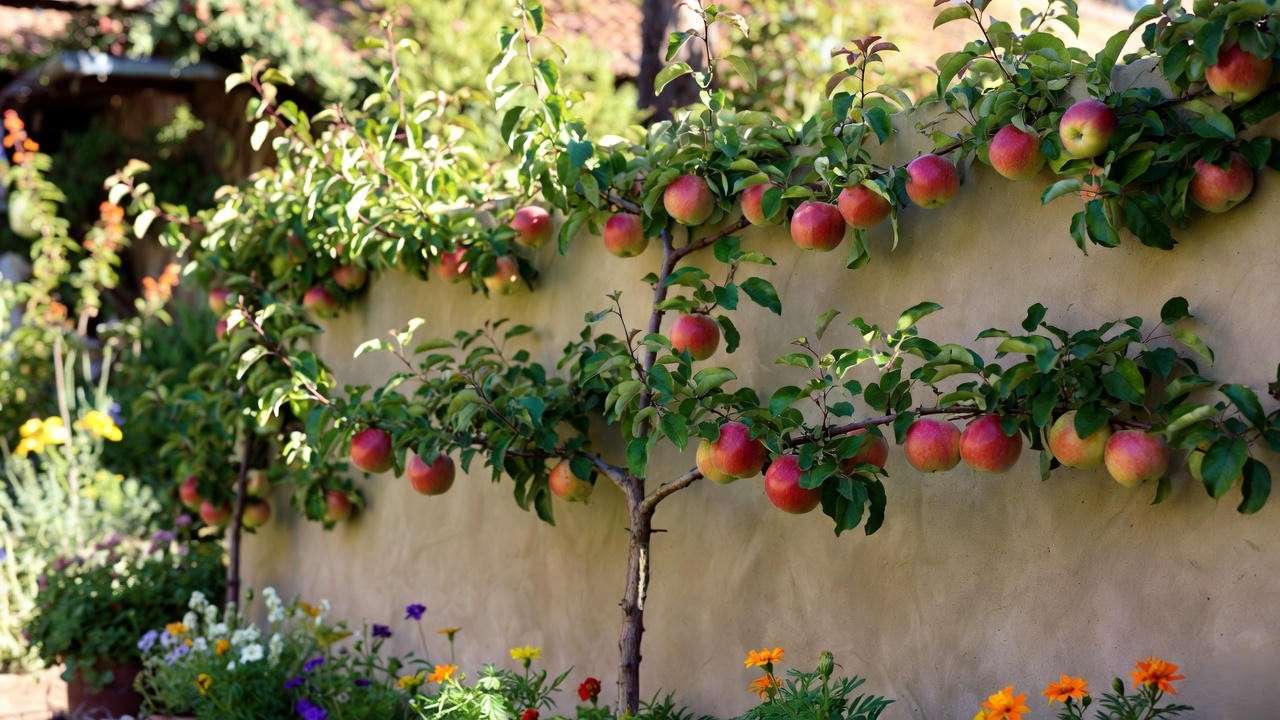
Boosting Yields with Companion Planting
Companion plants enhance Anna apple tree health:
- Marigolds: Deter aphids and attract pollinators.
- Clover: Fixes nitrogen in soil, reducing fertilizer needs.
- Chives: Repel pests with their strong scent.
Expert Insight: Avoid planting near walnut trees, as their juglone toxin can harm apple trees.
Year-Round Care Calendar
Follow this monthly guide for thriving Anna apple trees:
- January–February: Prune and apply dormant oil sprays to control overwintering pests.
- March–April: Fertilize and monitor for fire blight during bloom.
- May–June: Thin young fruit to 6 inches apart for larger apples; begin harvesting.
- July–August: Water deeply during heatwaves; apply mulch.
- September–October: Clean up fallen fruit to prevent pests.
- November–December: Plant new trees or prepare soil for spring.
Visual Aid Idea: Offer a downloadable PDF calendar linking to seasonal care tips on your site.
Frequently Asked Questions About Anna Apple Trees ❓
Q1: How long does it take for an Anna apple tree to bear fruit? A: Dwarf trees typically fruit in 2–3 years, while standard trees take 3–5 years, depending on care and rootstock.
Q2: Can Anna apple trees grow in containers? A: Yes! Use dwarf varieties in large pots with well-draining soil and regular watering.
Q3: Do Anna apple trees need a lot of maintenance? A: Moderate. Regular watering, annual pruning, and pest monitoring keep them healthy.
Q4: Are Anna apples good for baking? A: Absolutely! Their sweet-tart flavor is ideal for pies, tarts, and applesauce.
Conclusion: Grow Your Own Anna Apple Trees with Confidence 🎉
Anna apple trees are a delightful addition to warm-climate gardens, offering sweet, homegrown apples with minimal chill requirements. By following this guide—crafted with insights from over a decade of horticultural expertise—you’ll master planting, care, pest control, and harvesting. From choosing the perfect sunny spot to savoring your first apple pie, every step is designed to help you succeed. Start your Anna apple tree journey today, and enjoy the fruits of your labor for years to come! Share your tips or questions in the comments below, and let’s grow together. 🌸

